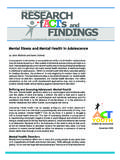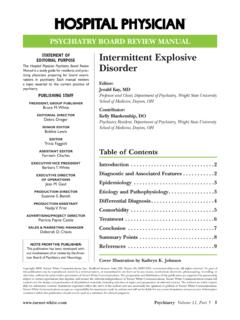Transcription of UU nniitt 22: - Virginia Department of Education
1 Unit 2: Characteristics Page 1 nniitt 22:: CChhaarraacctteerriissttiiccss ooff CChhiillddrreenn wwiitthh SSppeecciiaall NNeeeeddss Overview Unit 2 teaches drivers basic characteristics of children with special needs, focusing on implications for the bus ride. Special concerns when transporting medically fragile children and very young children with disabilities are also addressed. UU Special Drivers for Special Children Unit 2: Characteristics Page 2 Unit 2 Framework Core Content Outline Unit 2 introduction attention deficit disorder Autism Hearing and visual impairments Emotional disturbance Intellectual disability Multiple disabilities Specific learning disability Speech or language impairment Traumatic brain injury Orthopedic impairment Other health impairments Children who are medically fragile Preschoolers with special needs Unit 2 review Objectives By the conclusion of this unit.
2 Drivers will be able to: 1. Explain the importance of treating each child as an individual. 2. Describe the basic characteristics of each disability. 3. Identify special challenges presented by each type of disability during the bus ride. 4. Describe at least one strategy to safely transport a child with each type of disability. Suggested Time 60 minutes Preparation 1. Read Best Practice Backgrounders for each disability category covered in this unit 2. Projector, screen, and PowerPoint in place Special Drivers for Special Children Unit 2: Characteristics Page 3 UNIT CORE CONTENT Unit 2 introduction Instructional Strategies Discussion questions What s the difference between a characteristic and a stereotype?
3 Have you known someone who didn t fit their stereotype? Have you ever been treated as a stereotype instead of as an individual? How can stereotypes limit our ability to predict children s behavior? PowerPoint Slide : Characteristics of Children with Special Needs Workbook BEST PRACTICE BACKGROUNDER Most people can recall a time when they made an unfounded assumption about how someone with a disability was going to behave, realizing only later that their preconceived ideas were not completely accurate.
4 No matter whom we are dealing with, sometimes our expectations about people are born out, and other times we are surprised to find out how different an individual is from the stereotype we based our expectations on. Beware stereotypes. Stereotypes are based on generalizations about people, sometimes accurate, sometimes not. Basing our interaction with children on stereotypes can limit our ability to predict behavior. For instance, drivers sometimes choose a route with students who are deaf and hearing-impaired because they anticipate a quiet route.
5 After just one day this misconception is usually revised. Because these students do not have adequate auditory feedback, they can easily be the loudest group of students to require services. Many other misconceptions about children with disabilities exist. For instance, children with autism are sometimes seen as intellectually limited, while many are anything but. Similarly, children with physical disabilities are frequently treated as though they re helpless and weak, while many are strong and physically capable in many situations.
6 Children with disabilities are individuals. It is important for drivers and aides to learn the characteristics of the disabilities of the students they serve. However, it s equally important not to stereotype children with special needs. They are children first, and children with disabilities second. This unit provides drivers and aides with descriptions of students with disabilities and explains how their characteristics can impact the bus ride to and from school. Regardless of the nature of the disability, the most important consideration for a driver is ensuring a safe ride and relating to children in a manner that minimizes problem behaviors.
7 It s important that drivers and bus aides find out what works best for the students on their own bus. Understanding the characteristics of different disabilities and how to anticipate and manage potential bus problems is a Drivers for Special Children Unit 2: Characteristics Page 4 Instructional Strategies Discussion questions What strategies are most effective when transporting children with attention deficit disorder? PowerPoint Slide : attention deficit Disorder Workbook UNIT CORE CONTENT attention deficit disorder BEST PRACTICE BACKGROUNDER Characteristics.
8 Children with attention deficit disorder (ADD) or attention deficit hyperactivity disorder (ADHD) may exhibit some or all of the following characteristics: Short attention span difficulty focusing Poor memory Disorganization Poor impulse control Restlessness Incessant talking Incessant activity Note: Under IDEA, ADD and ADHD are not considered separate disability categories but are included under Other Health Impairments. Challenges for the bus ride. Children with attention deficit hyperactivity disorder can be a challenge on a school bus.
9 Typical problems include: Inability to stay seated may move impulsively around the bus. Difficulty following directions for a protracted period of time when told to sit down, for instance, a child with ADD or ADHD may briefly do so but then quickly begin moving from seat to seat again. Dangerous behavior getting on or off the bus for instance, impulsively running across the road, away from school staff, or back to the bus as it leaves the stop, are all possibilities of which to be aware of. Stimulating other students the high activity and energy level of children with attention deficit disorder can raise the temperature on a bus, getting other children stirred up.
10 A child s medication may not have taken effect by the time he or she is picked up in the morning, or may have worn off by the time the bus comes to take the child home in the afternoon. (Your school division may not require that a child take prescription medication as a condition of a child attending school, receiving an evaluation, or receiving special Education and related services.) High noise level may create frustrating or unsafe conditions on the bus. Because ADD and ADHD children look normal, sometimes it s harder to remember it s a real disability and not just bad behavior.













